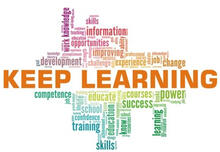As the 2024 Presidential campaigns begin to emerge in the U.S. it’s tempting to fall into familiar habits of oversimplifying the challenges we face to make it easier to pick a side. And, of course, that’s just what every campaign wants us to do. The truth, however, is that the binary choices on the ballot represent very complex mixtures of factions, powerbases, interests, aspirations, and preferences for how we want our government to understand and to address the increasingly complex problems America faces in the world.
Largely driven by population growth, scientific and technological progress since the early twentieth century, the internationalization of institutions and capital markets since the end of WWII, the unprecedented explosion of global economic growth (and inequality) since the end of the Cold War, and the consequences of global warming, the fast-changing urban world defines our American domestic problems and unites those problems to cultures across our boundaries to connect our future to the fate of our allies and our adversaries alike.
This brings social problems and challenges that involve multiple interactions and feedback among various elements of society, with social, economic, political, and emotional factors intertwined with more quantifiable factors of physical technology and climate change. None of these problems can be easily “solved” by targeted policy experiments. The implementation of any presumed simple solution is apt to change the targeted urban system in complex and unpredictable ways. That’s how complex systems work.
Yet systems perspectives are in many ways common sense. They prescribe that when facing complex problem situations, we should make sure from the start to have clear and unambiguous goals and priorities for any actions that might be taken to resolve a problematical situation. We should make sure that first things get done first, such as understanding the underlying system before acting. We should thoughtfully anticipate the side effects and longer-term consequences of the actions we propose to take. We should avoid ascribing all factors underlying a problem situation to one central cause, and we should not believe in panaceas, including simple ideological solutions. We should recognize and accept that some of our actions will not be successful. After all, in baseball, a batting average of only .350 puts a player in the Hall of Fame! We need to avoid trying too hard to protect ourselves from threats to our own wishful beliefs about our own competence.
Systems perspectives alone will not suffice to solve these problems. But by acknowledging and understanding the underlying complexities, systems perspectives can enhance the opportunities available for bringing the underlying factors and their interconnections meaningfully within the purview of the human mind, thus helping us to adapt to some of them individually and collectively and to alleviate or resolve others.
When developing and using a systems perspective to design solutions for any given problem, the first step is to understand the context of the problem. This is followed by an effort to elicit multiple perspectives. Then a solution is sought and allowed to emerge. This all involves a messy, time-consuming, process-oriented approach to problem-solving and it requires non-linear dynamic learning. But it pays off by dramatically decreasing the likelihood of negative outcomes such as unintended consequences, failure to resolve problematic situations, prolonged periods of action without progress, waste of resources, and mental frustration.
Systems perspectives recognize that problem descriptions are one of the keys to success in resolving problematic situations. The basic principle is to know as many of the salient features of the problem one is trying to solve as possible before taking any action to solve it. Otherwise, to act first, without having a clear, full, and unambiguous description of the problem situation, is to force a preexisting solution on the problem. It’s much like when the only available solution is a hammer, all problems begin to resemble nails, even when other tools would do a much more effective and efficient job. Such a forced problem-solving approach is especially risky given the likelihood of unintended consequences in large-scale, complex systems.
In using a systems perspective, people who describe and/or diagnose a problematic situation, and who design and implement action to resolve it, not only recognize themselves as being an integral part of the complex system but also understand that their relationships to and experiences with other people are similar parts of it. Unlike conventional approaches in which description and diagnosis is done offhand without any careful attention being paid to the full range of underlying circumstances and factors, the systems approach begins by securing multiple descriptions given by those who are close to the problem situation. Only when numerous individual-level descriptions have been secured, and the differences between them have been documented and systematically resolved and integrated into a completed overall problem description, does the diagnosis and design for action begin to take form.
By recognizing themselves as being a part of the problematic situations, systems thinkers are nudged toward recognizing the assumptions they make. That is, whenever people act, they invariably do so under the influence of some of the assumptions they hold themselves. These normally arise out of experiences of all kinds, including educational experiences. Their role in resolving problematic situations becomes clear when considering that people are sometimes surprised when they find out that the actions they take do not produce the effects (and only the effects) they expect. If, because of encountering this sort of surprise, they go back and question their assumptions, they are likely to discover that they apply only in restricted circumstances, and specific circumstances quite different than those in which the actions with unanticipated outcomes were taken.
Well-developed systems perspectives help resolve complex problem situations by avoiding the temptation to make certain killer assumptions that tend to result in failure to resolve problems in complex systems. For example, they avoid the assumption that casual or political processes alone are sufficient to enable a full description and diagnosis of problematic situations involving high complexity. They avoid the assumption that if information comes from a prestigious source, then it need not be questioned. Similarly, they avoid the assumption that high-ranking officials and executives have the intellectual capacity to comprehend all the factors that are relevant to an executive decision; how the various factors are inter-related; what alternatives are relevant when it is time to make a choice; how to prioritize the alternatives; and at what time action should be initiated.
But systems thinking is not widely taught in our systems of education. Our educational systems have tended away from teaching students to construct the sorts of deep, long, logical chains of reasoning necessary for such thinking. Instead, they focus almost exclusively on teaching transferable skills and producing measurable outcomes such as numbers of degrees, certificates, standardized testing results, and job placements. Yet the ability to understand and respond successfully to the problems associated with complex urban society depends as never before upon preparing young people to develop and employ high-quality, critical thought, such as by questioning their assumptions, and the assumptions of others, and by acquiring knowledge and an awareness of the systems in which we live, and our interconnected relationship to them.
Adequacy in systems thinking is achieved when it becomes clear that more is necessary than an off-the-cuff description of a problem situation, an action to resolve it, some reflection on the action, and the next time a similar situation occurs, some adjustment to correct any errors made earlier. It is also important to encourage anyone who participates in the action to ask critical questions about why such actions are being taken in the first place, what priorities they should have, and whether some other alternative might prove to be superior. This allows a wide range of people to fully reflect on why they’re doing what they’re doing to solve the problem, as well as on the full range of outcomes of their actions.
The problem situations that have emerged throughout history have at any given time been full of opportunities and alternatives, of which only a very small portion has been exploited. Those found in today’s complex urban society are no different in this way.
While systems perspectives are certainly no panacea, their development and use by any complex coalition of factions and interests that aspires to lead the American government, and American society more broadly, needs to be examined carefully by voters. Political campaigns, by definition, superficially deal with complex problems using under-conceptualized ways and means. Yet thoughtful voters need to cultivate their own use of systems perspectives so they can critically examine the quality of intellectual assessment that lies underneath the simple public veneer that campaigns cultivate. Assessing the capacity of alternative governing groups to find solutions to the large-scale, complex problems we face, is the single most hopeful way I can imagine to secure a positive future by exercising the right to vote.
Thanks for reading The Urban Lens Newsletter!
Bill Bowen
Subscribe for free to receive new posts and support our work.
This issue of Urban Lens Newsletter has been reproduced from the email edition. The Urban Lens Newsletter is published on Substack, and is available online or through the app.
- Log in to post comments














Latest Comments